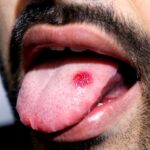A stroke is a medical emergency that occurs when blood flow to a part of the brain is interrupted, leading to potential brain damage. Recognizing the early signs and symptoms of a stroke can be critical for timely treatment and improving outcomes. Prompt medical intervention can significantly reduce the risk of long-term disability or death.
Understanding Stroke
A stroke is typically classified into two main types:
- Ischemic Stroke: Caused by a blockage in an artery supplying blood to the brain.
- Hemorrhagic Stroke: Caused by bleeding in or around the brain due to a burst blood vessel.
Regardless of the type, recognizing the early symptoms is crucial for effective treatment.
Early Signs and Symptoms
The acronym FAST is a helpful tool for identifying stroke symptoms quickly:
- Face Drooping: One side of the face may droop or become numb. Ask the person to smile. If their smile is uneven or lopsided, it could be a sign of a stroke.
- Arm Weakness: The person may experience sudden weakness or numbness in one arm or leg. Ask them to raise both arms. If one arm drifts downward or is unable to be lifted, it could indicate a stroke.
- Speech Difficulty: Slurred or strange speech is a common symptom. Ask the person to repeat a simple sentence. If they have trouble speaking or their speech is incomprehensible, it may be a sign of a stroke.
- Time to Call Emergency Services: If any of these symptoms are observed, it is essential to call emergency services immediately. Time is critical in stroke treatment, and faster intervention can reduce brain damage and improve outcomes.
Additional Symptoms to Watch For
In addition to the FAST symptoms, other signs of a stroke may include:
- Sudden Confusion: Difficulty understanding or responding to questions, or sudden confusion and trouble comprehending simple instructions.
- Sudden Vision Problems: Loss of vision or double vision in one or both eyes.
- Sudden Difficulty Walking: Loss of balance, coordination issues, or difficulty walking without reason.
- Severe Headache: A sudden, severe headache with no known cause, often described as the worst headache ever experienced.
Risk Factors for Stroke
Several factors can increase the risk of stroke, including:
- High Blood Pressure: One of the most significant risk factors for stroke.
- Diabetes: Poorly managed diabetes increases stroke risk.
- High Cholesterol: Elevated cholesterol levels can lead to artery blockages.
- Smoking and Alcohol Use: Both smoking and excessive alcohol consumption increase stroke risk.
- Heart Disease: Conditions such as atrial fibrillation can increase the likelihood of stroke.
Preventing Stroke
Preventing stroke involves managing risk factors and leading a healthy lifestyle. Key strategies include:
- Controlling Blood Pressure: Regularly monitor and manage blood pressure levels.
- Managing Diabetes: Keep blood sugar levels within target ranges.
- Healthy Diet and Exercise: Adopt a balanced diet low in saturated fats and engage in regular physical activity.
- Avoiding Smoking and Excessive Alcohol: Refrain from smoking and limit alcohol intake.
- Regular Medical Check-ups: Regular visits to a healthcare provider to assess and manage risk factors.
Recognizing the early signs and symptoms of a stroke and acting swiftly can be lifesaving. The FAST acronym is a crucial tool for identifying stroke symptoms quickly, but being aware of additional signs can further aid in early detection. By understanding these symptoms and risk factors, individuals can take proactive steps to reduce their stroke risk and ensure prompt treatment if a stroke occurs.










